WEEK8 CONVERSATION WITH CAP STUDENTS
![{"source_type":"douyin_beauty_me","data":{"capability_key":["imageeffect","edit"],"infoStickerId":"","stickerId":"","filterId":"","capability_extra_v2":{"imageeffect":[{"resource_id":"6889060250788303373","origin":"heycan","effect_id":"954080"}]},"os":"ios","enter_from":"enter_launch","activityName":"","pictureId":"705D2A8B-E665-4AD2-A9BB-4550A125AE90","product":"retouch","imageEffectId":"954080","playId":"","appversion":"11.9.2"}}](https://blogs.ed.ac.uk/s2670174_curating-2024-2025sem2/wp-content/uploads/sites/11207/2025/04/IMG_3353-scaled.jpg)
On March 13th, our CAT and CAP students came together for an enriching dialogue that bridged the gap between theory and practice. This collaborative event, designed as a conversation between the two disciplines, provided a dynamic platform where contemporary art practice was not only discussed but also experienced firsthand.
During the session, we were divided into several small groups, each tasked with engaging in discussions led by CAP students. These CAP students took turns introducing their artworks to the CAT students, offering in-depth insights into the creative processes behind their projects. The presentations were both thoughtful and candid, highlighting the challenges and successes that come with working in the realm of contemporary art. They explained the conceptual frameworks that inform their practice, discussed their technical choices, and reflected on how theory plays a role in shaping artistic expression.
During the conversation, I was impressed by the work of several CAP artists.
Yi Huang
Yi Huang’s Flower Vending Company (2025) is a speculative digital media project that reimagines commerce through 3D-modeled “future flora.” This virtual platform trades in hybridized botanical forms—part organic, part synthetic—that challenge conventional notions of nature and consumption. By simulating a corporate interface selling impossible blooms, the work interrogates themes of ecological commodification, techno-utopianism, and humanity’s fraught stewardship of biodiversity. Through its uncanny fusion of commercial aesthetics and biofabricated fantasy, the piece invites viewers to question how innovation might reshape—or exploit—the natural world in an era of climate uncertainty.
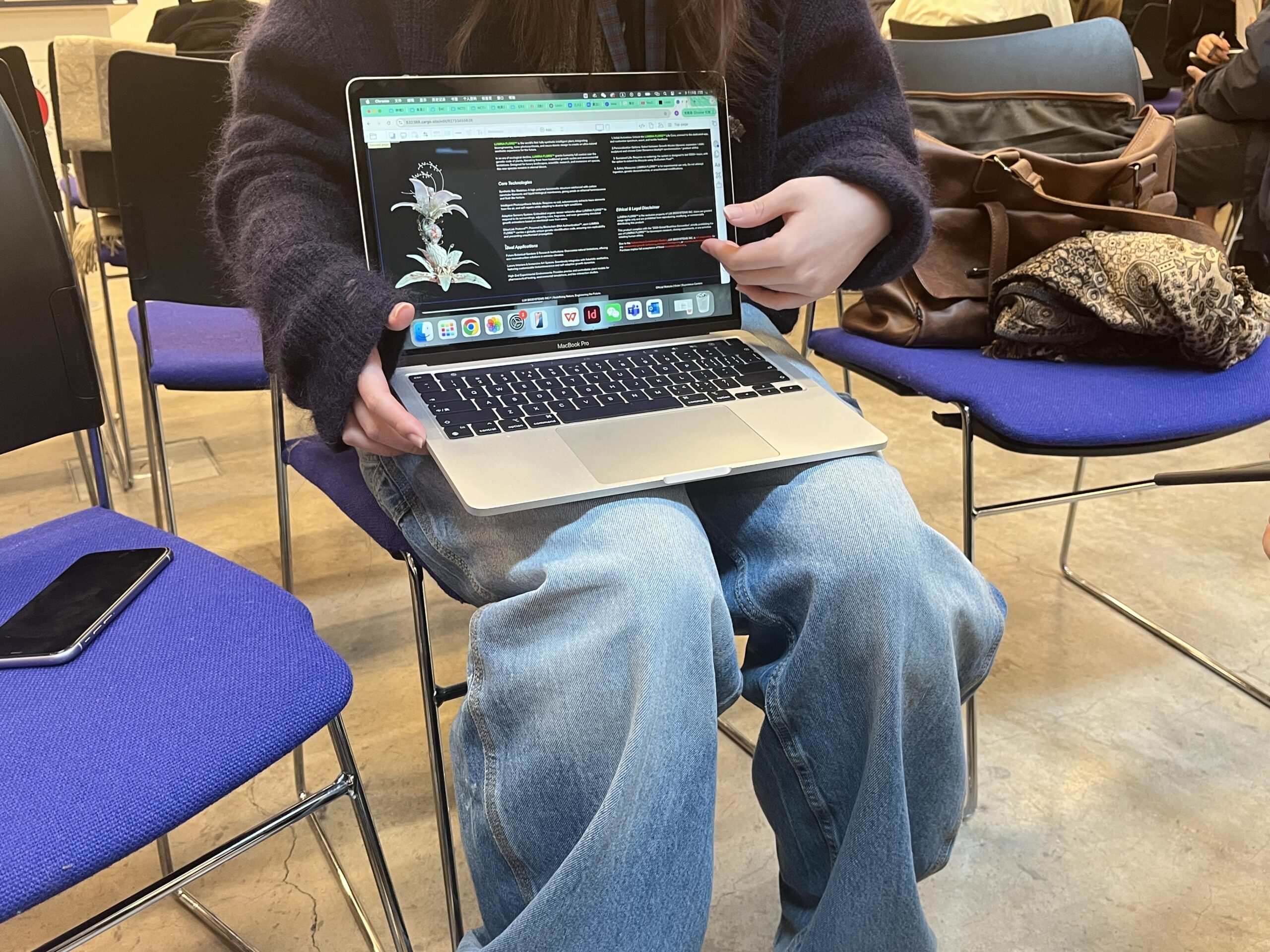
Yi Huang. Flower Vending Company, Digital Media, 2025.
Yi Huang’s Women’s Matchmaking Corner (2024) is a sharp digital critique of modern matchmaking culture. The work constructs an AI-driven platform where synthetic female faces endlessly morph and overlap, converging into eerily similar “ideals” of beauty—smooth skin, symmetrical features, standardized allure. This algorithmic homogenization lays bare how patriarchal tech systems reduce women to interchangeable commodities in dating markets. By mirroring the dehumanizing logic of real-world “marriage corners,” Huang satirizes societal obsessions with conformity, exposing beauty standards as data-curated fictions that erase individuality. The piece challenges viewers to interrogate how technology perpetuates gendered expectations under the guise of progress.
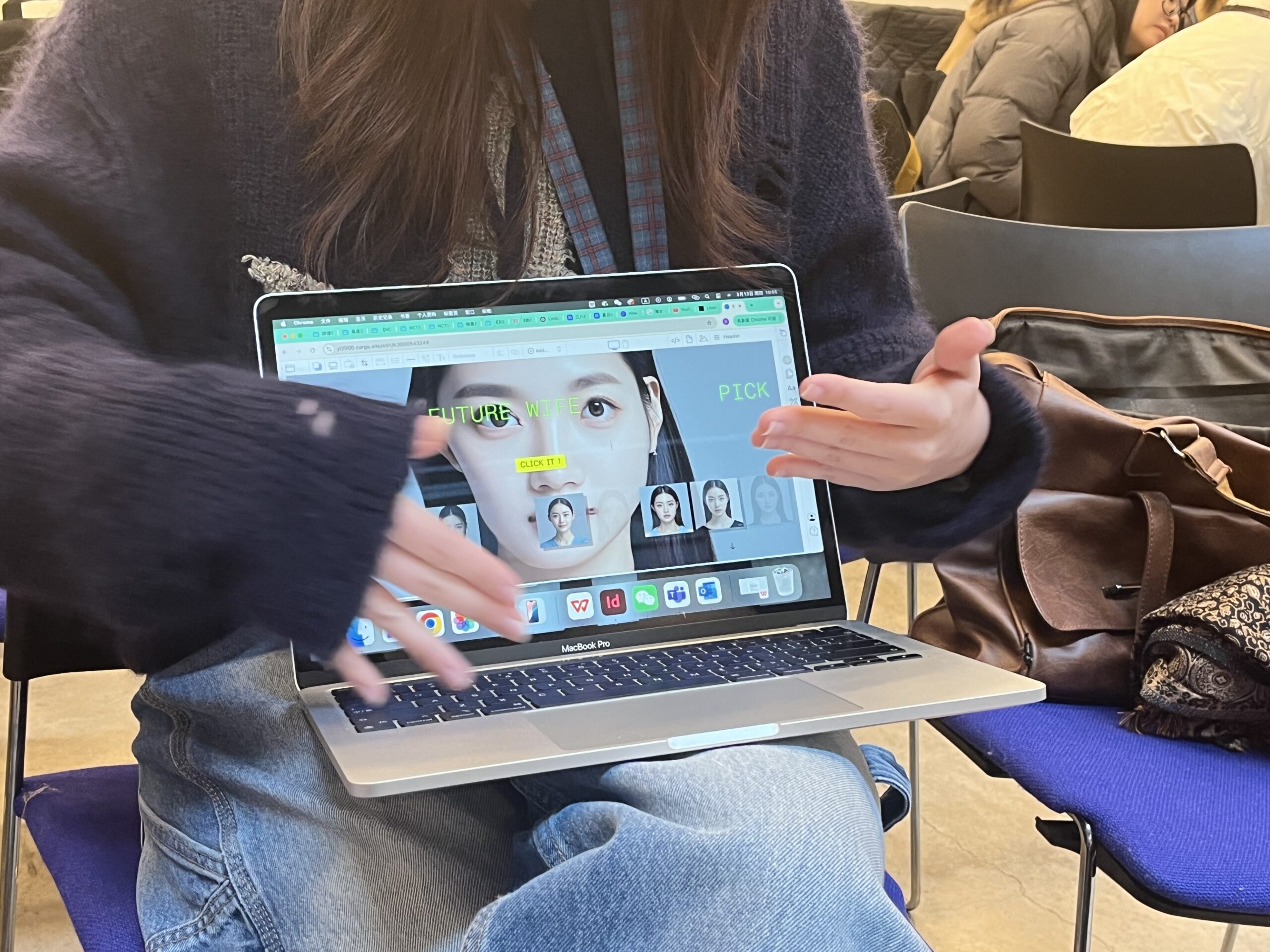
Yi Huang. Women’s Matchmaking Corner, Digital, 2024.
Sijia Chen
Sijia Chen’s Squeeze it. (2024) subverts patriarchal iconography through three silicone phallic sculptures, each dyed in vibrant hues and embossed with animal symbols—bull, snake, horse—evoking hypermasculine tropes of dominance, cunning, and virility. The malleable material invites tactile interaction, transforming rigid symbols of power into pliable, almost absurd objects. By encouraging audiences to squeeze, distort, and “play” with these forms, Chen critiques toxic masculinity’s performative rigidity, reframing authority as fragile and subject to manipulation. The work provocatively questions societal reverence for male-centric power structures, using humor and corporeal engagement to dismantle the myth of invulnerability embedded in gendered hierarchies.
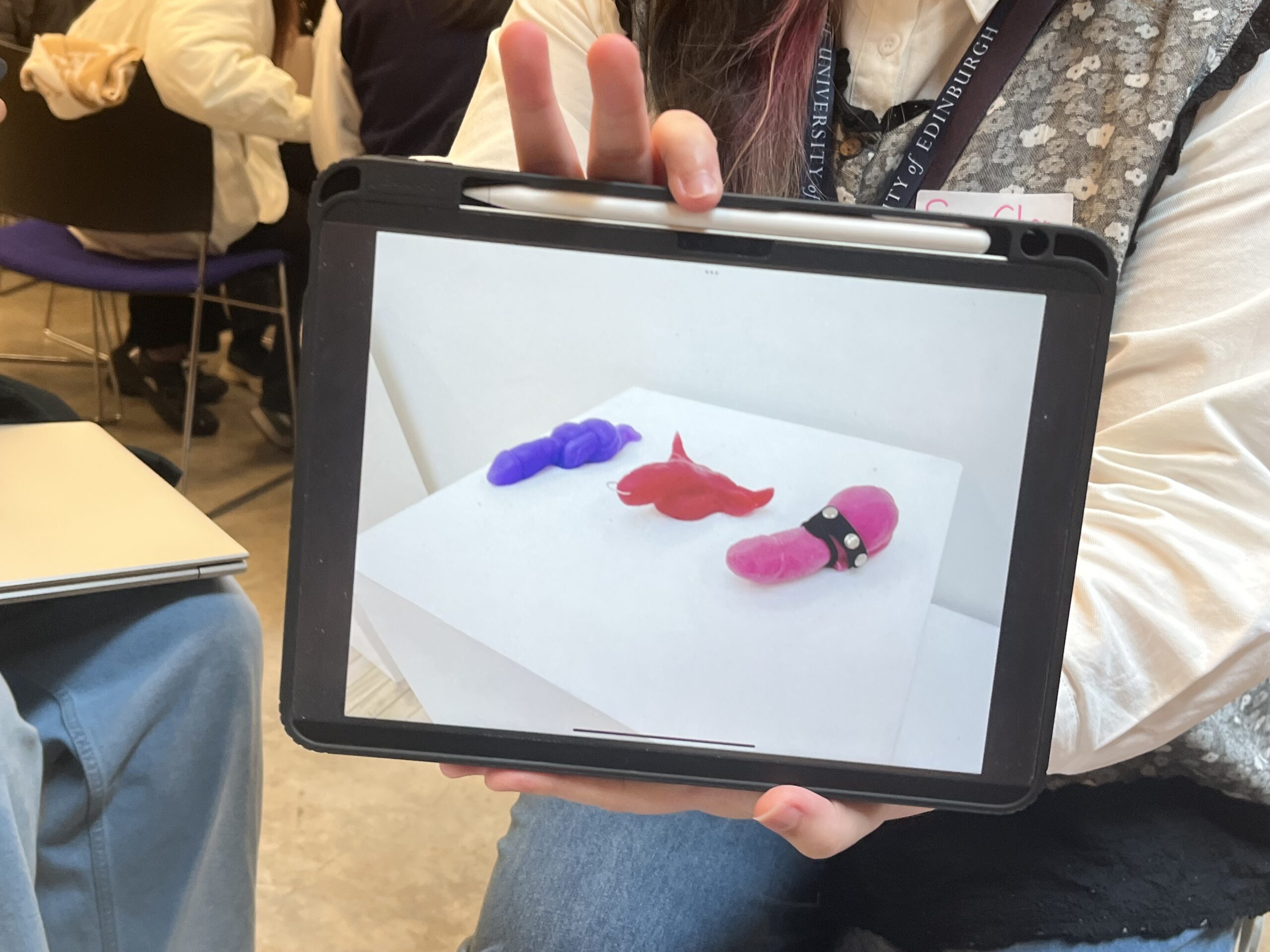
Sijia Chen. Squeeze it. Silicone, 2024.
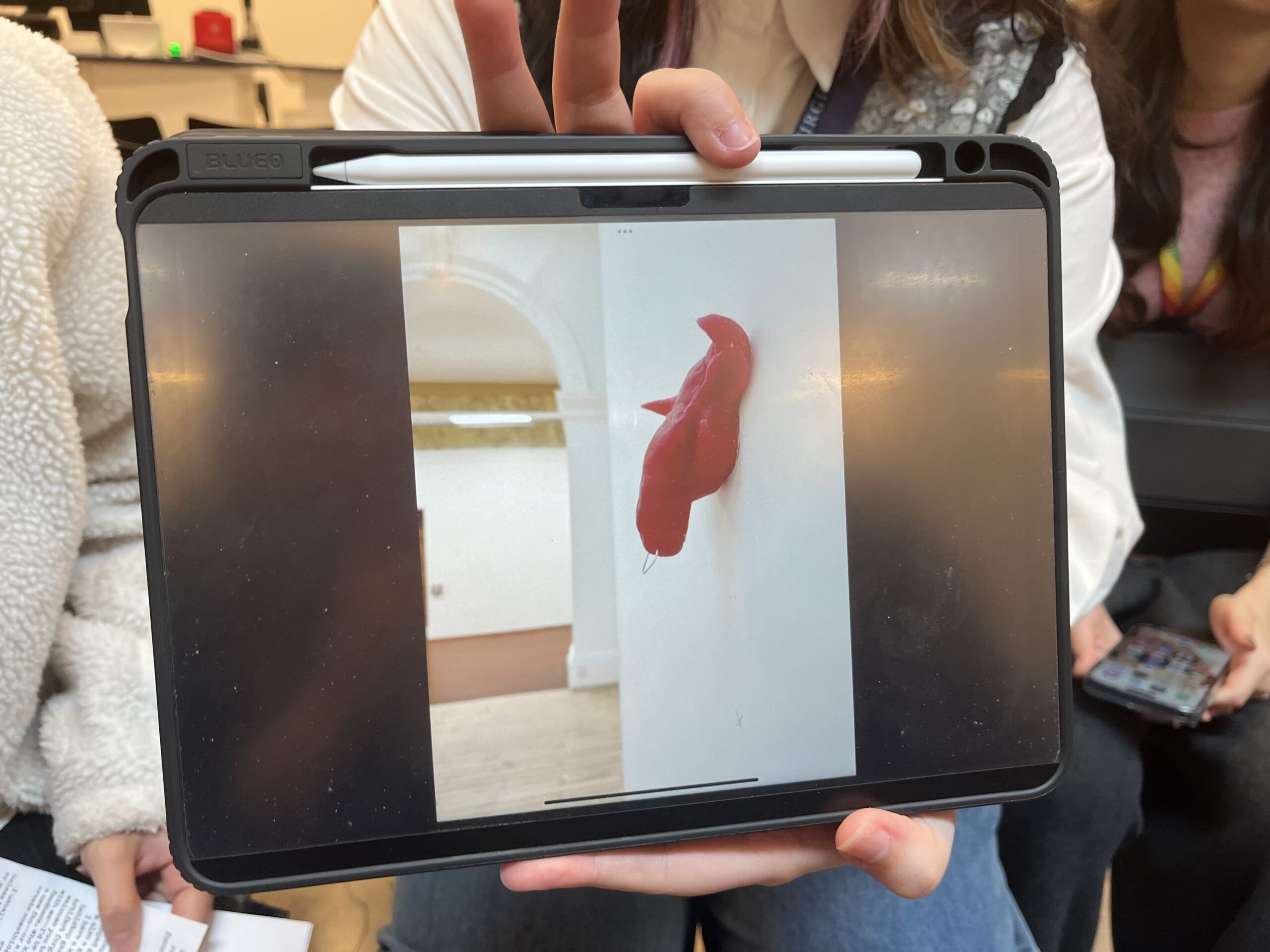
Sijia Chen. Squeeze it. Silicone, 2024.
Athip Rianlootrattana (Mook)
Mook’s painting DANGER! DO NOT OPEN (2025, Oil on Canvas) depicts a surreal cabinet-like space in which two skeletal figures flank a large moth. The battered frame and cautionary tape evoke both curiosity and foreboding. The skeletal dancers, each holding a draped cloth, suggest transformation or ritual, while the central insect hints at metamorphosis. Contrasting themes of life, death, and hidden truths create tension, inviting viewers to question what lies behind the warning. The aged box setting underscores the fragility of existence, while the painting’s theatrical composition blurs the boundary between spectacle, mystery, and caution. This imagery provokes deeper reflection.
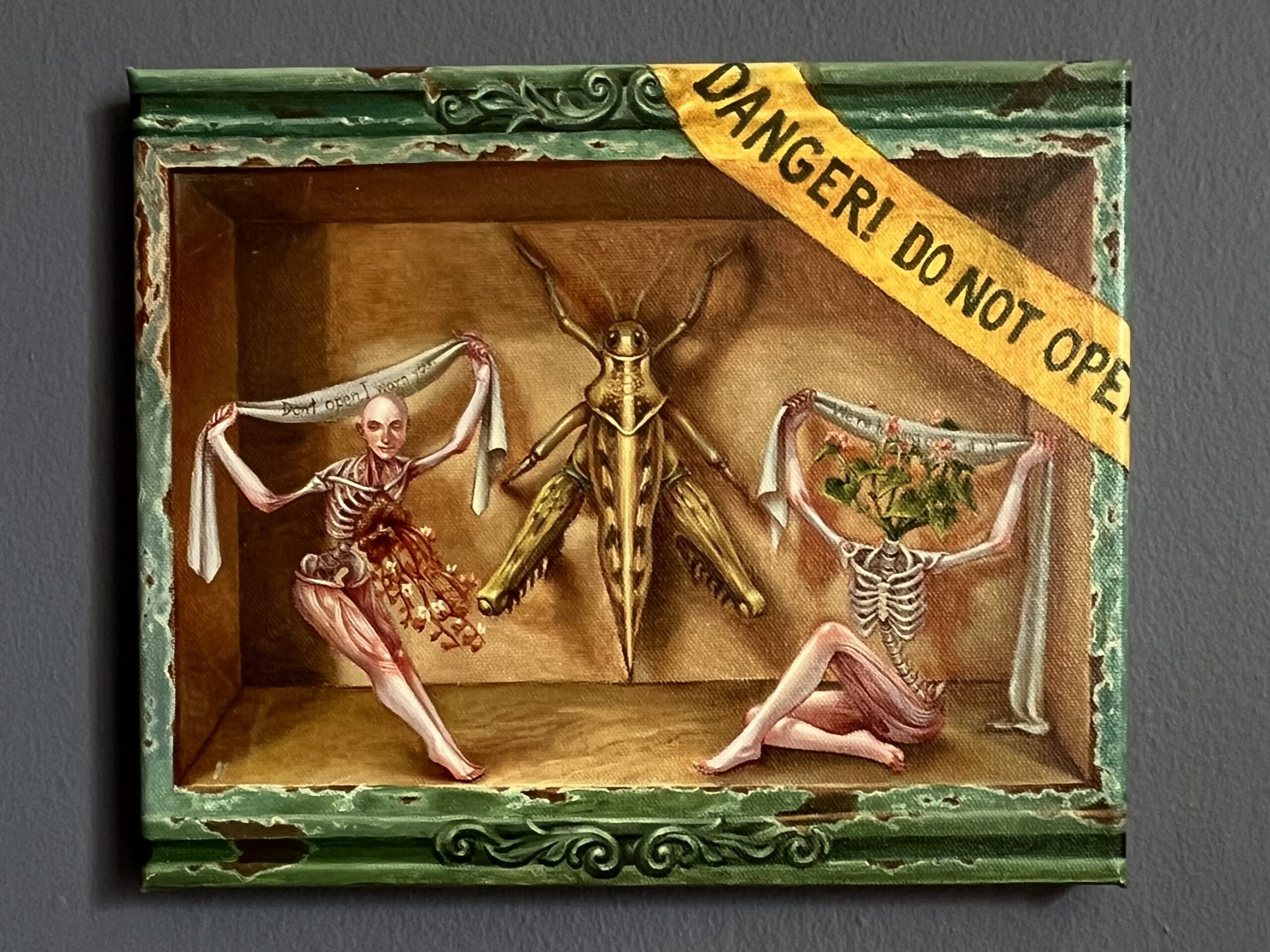
Athip Rianlootrattana. DANGERI DO NOT OPEN. Oil on canvas, 2025.
All in all, the conversation on 13 March helped me to get to know my fellow artists. They are all representatives of emerging artists with potential. The face-to-face interaction helped me to select artworks, communicate and collaborate with the artists in a more in-depth way. The participants showed that when theory and practice are combined, the result is not only a deeper understanding of art, but also the creation of a vibrant community eager to explore, experiment and redefine contemporary art.
WEEK8 CONVERSATION WITH CAP STUDENTS / Tianyi Chen / Curating (2024-2025)[SEM2] by is licensed under a
WEEK8 CONVERSATION WITH CAP STUDENTS / Tianyi Chen / Curating (2024-2025)[SEM2] by is licensed under a



